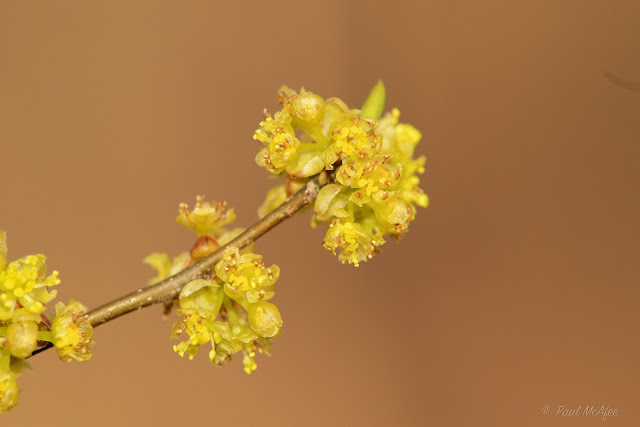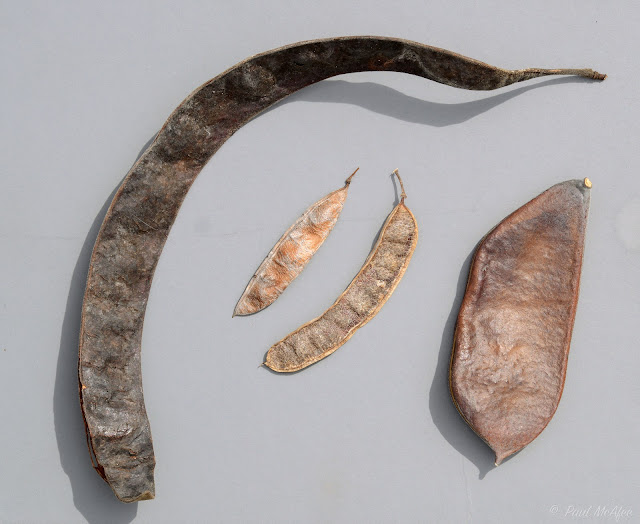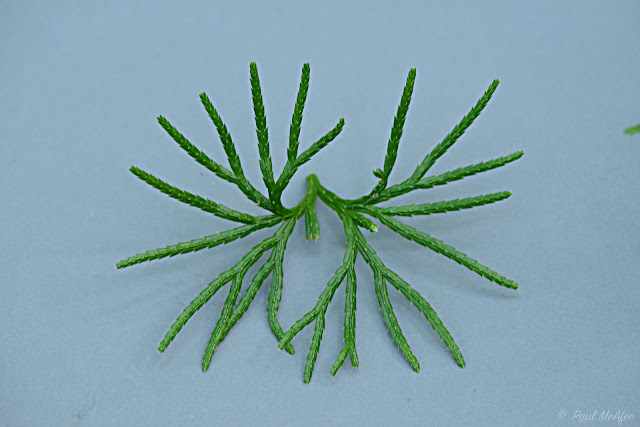 |
| Northern Spicebush Lindera benzoin |
 |
| Northern Spicebush Lindera benzoin |
 |
| Northern Mountain Ash Sorbus decora |
Forested dunes and bluffs, especially frequent at edges of forests along Lake Superior; deciduous, mixed, and coniferous forests, often with fir, cedar, and pine, but sometimes in beech-maple stands; seems to thrive particularly well along shores, perhaps because of the moister climate and perhaps because released from competition of larger trees in the forest.
 |
| Northern Maidenhair Adiantum pedatum |
 |
| Nodding Wakerobin Trillium flexipes |
 |
| Nodding Onion Allium cernuum |
 |
| Flat, grass-like leaf |
 |
| The flowers aren't quite nodding yet, but they will. |
 |
| Michigan Lily Lilium michiganense |
 |
| Kentucky Coffeetree Gymnocladus dioicus |
 |
From left to right: Honeylocust Eastern Redbud Black Locust Kentucky Coffeetree |
 |
| Jack-Go-To-Bed-At-Noon Tragopogon lamottei |
This plant goes by many names, most of which are easier to say than Jack-Go-To-Bed-At-Noon. The names I use for this blog come from the name used by the USDA Plants Database - https://plants.usda.gov/home/plantProfile?symbol=TRPR.
Other names are Salsify and Goats-beard, both of which are better than Jack-Go-To-Bed-At-Noon. Of course I don't think anyone reads this blog, so I could call it anything I want.
 |
| This is why it's called Goats-beard. |
 |
| Indian-Tobacco Lobelia inflata |
As you might guess, Indian-Tobacco was smoked by Indians. Native Americans used it for a variety of medicinal reasons, some of which involved smoking, such as a treatment for asthma. It was also used as a ceremonial plant, i.e. used by shamans and others to cure people during a ceremony. Sometimes these ceremonies involve hallucinogenic plants, but I think Indian-Tobacco only caused a feeling of goodwill, similar to nicotine.
However, consuming this plant has a variety of side effects, ranging from excessive sweating to death, and lots of options in between. Do not smoke or eat this plant unless you get clear advice from a medicinal herbalist!
 |
| The flowers and seedpods are quite distinctive looking. |
 |
| Red Maple Acer rubrum |
Red Maple is naturally found in lowlands; wet spots. However, given its beautiful fall color and tolerance for wet spots, it has been planted extensively in landscape situations. In fact, there are over 20 varieties that have been created for landscaping. You are probably more likely to come across one in someone's yard than in the wild, unless you spend time wandering around in swamps.
The leaves are a bit different than the leaves of other maple species. Note the three lobed design where none of the sides are parallel and the edge of the leaf is serrated. That's a lot to memorize, but if you look at enough of the leaves, you'll get the hang of it.
 |
| The female flowers are tiny and red. |
 |
| In the spring, the red female flowers really brighten up the tree. |
 |
| Golden Ragwort Packera aurea |
 |
| The flowers of all of the Packera species look the same to me. |
 |
| Flowering Dogwood Cornus florida |
 |
| Flowering trees in the woods are a delightful spring sensation |
 |
| The buds are quite distinctive |
 |
| Fire Pink Silene virginica |
 |
| Field Sagewort Artemisia campestris |
The picture above is a young start of a plant. It eventually gets tall with lots of unimpressive flowers. This plant grows in dry, sandy areas, particularly around the dunes.
An interesting fact is that it is a host plant for another rare hemiparisitic plant; Orobanche fasciculata (Clustered Broomrape). The only place to find these plants together in Indiana is at the Indiana Dunes.
 |
| Fernleaf Yellow False Foxglove Aureolaria pedicularia |
 |
| Note the bipinnatifid leaves |
 |
| Note the pinnatifid calyx teeth |
 |
| Note the glandular hairs on the stem and pedicels |
 |
| Fan Clubmoss Lycopodium digitatum |
 |
| Leaves look like a fan |
 |
| European Lily of the Valley Convallaria majalis |
 |
| The pretty flowers make this a favorite for gardens and bridal bouquets. |
 |
| Elmleaf Goldenrod Solidago ulmifolia |
Plant namers have the same sort of trouble as street namers; it's easy to run out of ideas for names. When it gets to the point of naming plants after other plants, you know they hit the bottom of the barrel. In fact, the species name of ulmifolia literally means elm leaf, so they couldn't even think of a good scientific name.
On the other hand, if you know what an elm leaf looks like, it does make it easier to identify this species, since the leaves look more like elm leaves than the other goldenrod species.
This is one of the woodland species, along with Zigzag (Solidago flexicaulis) and Blue-stemmed or Wreath (Solidago caesia) Goldenrods. All three of these are a delight to see during a walk through the woods.
 |
| The leaf looks somewhat like an elm leaf, although it looks like any other leaf that is toothed and wider than many other goldenrod species. |
 |
| Zigzag Goldenrod leaf |
 |
| Wreath Goldenrod leaf |